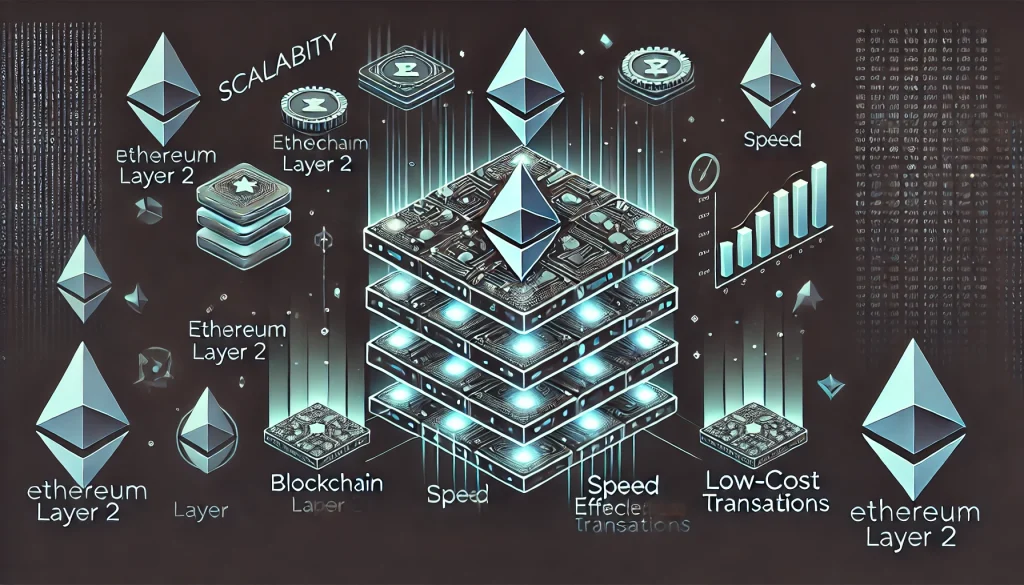Ethereum’s popularity has led to congestion and high transaction fees. That’s where Ethereum Layer 2 comes in. But what is Ethereum Layer 2, and how does it solve these issues? This article breaks down the key aspects of Layer 2 scaling, its benefits, and the top solutions in the ecosystem.

What Is Ethereum Layer 2?
Ethereum Layer 2 is a collective term for scaling solutions that operate on top of Ethereum’s main blockchain, or Layer 1. The primary purpose of Layer 2 is to enhance Ethereum’s transaction speed and lower gas fees by processing transactions off-chain while maintaining the security of the mainnet. But what is Ethereum Layer 2 in technical terms? It refers to protocols like rollups and sidechains that handle transactions outside the main Ethereum network but still settle final data on Layer 1. Understanding what is Ethereum Layer 2 is essential for developers, investors, and users looking to optimize their blockchain interactions.
Why Does Ethereum Need Layer 2 Scaling?
Ethereum’s increasing adoption has led to high network congestion and soaring transaction fees. Due to the network’s Proof of Stake (PoS) consensus mechanism, processing transactions on Layer 1 can be slow and expensive. This is where Ethereum Layer 2 comes into play, offering a solution that enables faster and cheaper transactions. Without Layer 2, Ethereum’s scalability issues could hinder its long-term adoption, limiting its potential for decentralized applications (dApps), DeFi projects, and NFTs.
How Does Ethereum Layer 2 Work?
To fully grasp what is Ethereum Layer 2, it’s crucial to understand how it functions. Layer 2 solutions operate by executing transactions off the Ethereum mainnet and then settling them in batches back onto Layer 1. This method significantly reduces the strain on the Ethereum blockchain while maintaining security through cryptographic proofs. Ethereum Layer 2 solutions use different mechanisms like Optimistic Rollups, Zero-Knowledge Rollups, and sidechains to achieve this.
Key Benefits of Ethereum Layer 2
One of the biggest advantages of Ethereum Layer 2 is its ability to reduce gas fees, which have become a major concern for users. Since transactions are processed off-chain, users experience significantly lower costs while still enjoying Ethereum’s security. Another key benefit is faster transaction speeds. Layer 2 solutions can handle thousands of transactions per second, compared to Ethereum’s base Layer 1, which processes around 15 transactions per second. Moreover, scalability is greatly improved, allowing Ethereum to support a larger user base and more complex applications.
Top Ethereum Layer 2 Solutions
There are multiple Ethereum Layer 2 solutions, each with unique features. Optimistic Rollups, such as Arbitrum and Optimism, assume transactions are valid unless challenged, making them efficient and cost-effective. Zero-Knowledge Rollups (zk-Rollups), like zkSync and StarkNet, use cryptographic proofs to validate transactions, providing enhanced security and faster finality. Sidechains like Polygon operate as independent blockchains connected to Ethereum, offering additional scalability while sacrificing some decentralization. Understanding what is Ethereum Layer 2 also involves recognizing the differences between these solutions and how they fit into the broader ecosystem.

Challenges and Risks of Ethereum Layer 2
Despite its benefits, Ethereum Layer 2 faces some challenges. Security concerns arise when bridging assets between Layer 1 and Layer 2, creating potential vulnerabilities. Decentralization trade-offs also exist, as some Layer 2 solutions rely on centralized sequencers to process transactions. Additionally, liquidity fragmentation can be an issue, as assets spread across multiple Layer 2 networks may require complex bridging mechanisms to maintain interoperability.
The Future of Ethereum Layer 2
The future of Ethereum Layer 2 looks promising, with ongoing improvements in scalability and security. Ethereum’s roadmap includes EIP-4844, also known as Proto-Danksharding, which aims to reduce transaction fees for rollups and enhance data availability. As Layer 2 adoption grows, it will play a crucial role in Ethereum’s transition toward mass adoption. The question what is Ethereum Layer 2 will become even more relevant as new scaling solutions emerge and more users migrate to Layer 2 networks.
Understanding what is Ethereum Layer 2 is essential for navigating Ethereum’s evolving ecosystem. By reducing costs, increasing transaction speeds, and improving scalability, Layer 2 solutions are paving the way for Ethereum’s long-term success. As new technologies develop, Ethereum Layer 2 will continue to be a critical part of the blockchain landscape.
For more insights on Ethereum, Layer 2 scaling, and cutting-edge blockchain developments, follow MevXBot for the latest updates and expert analysis.
